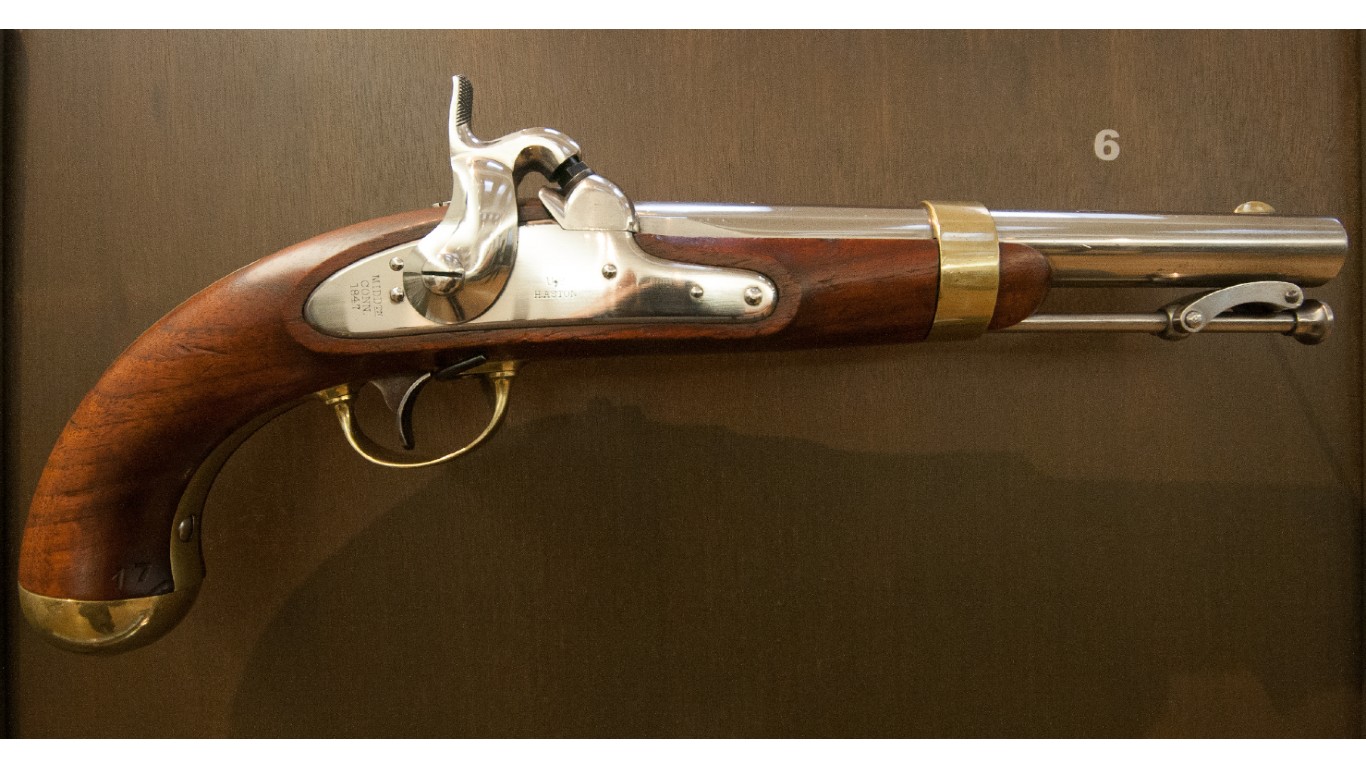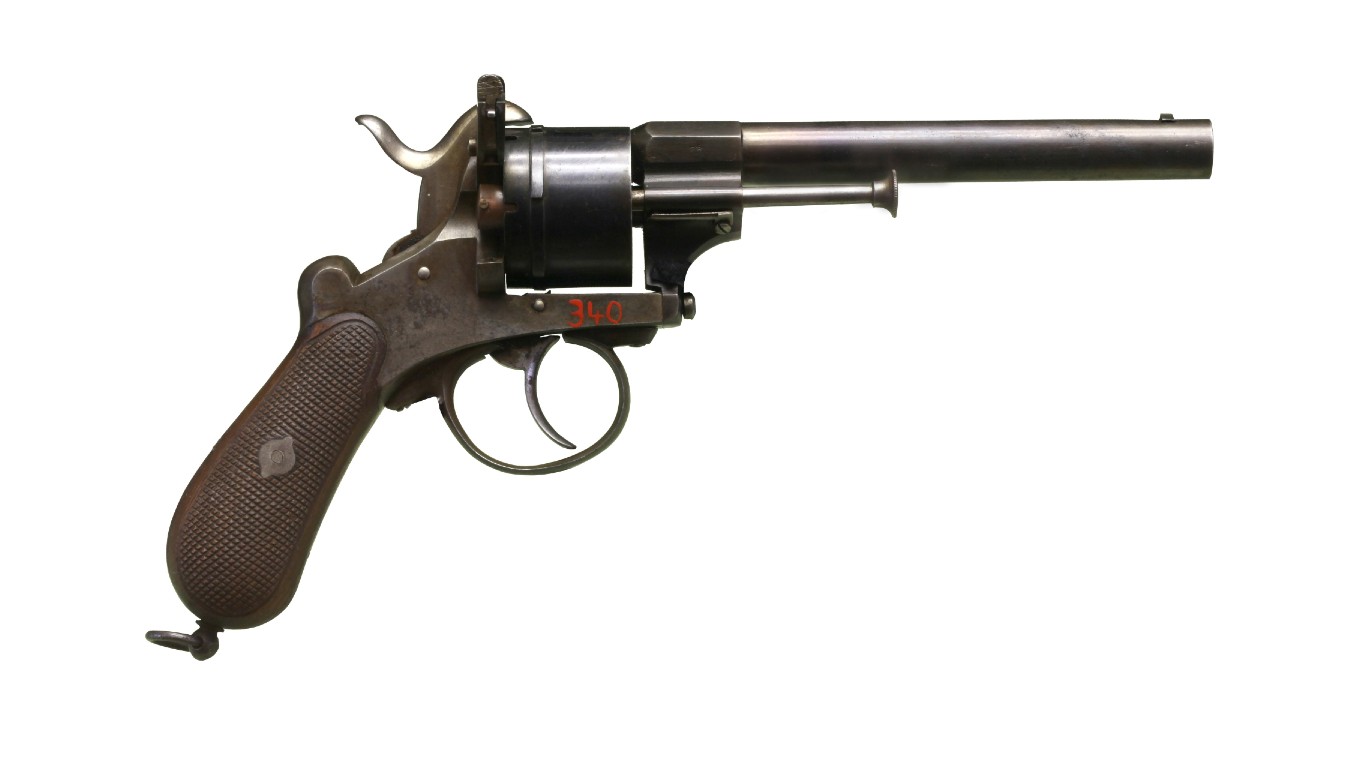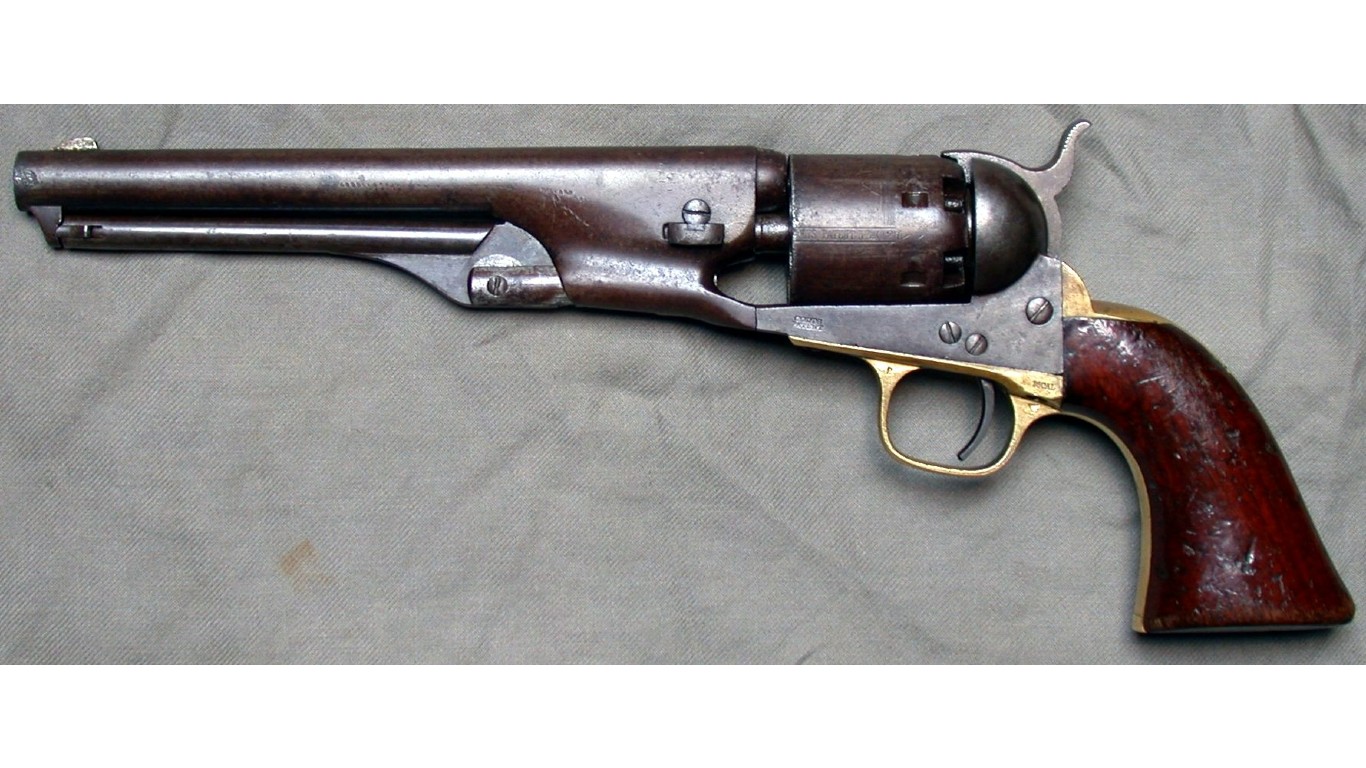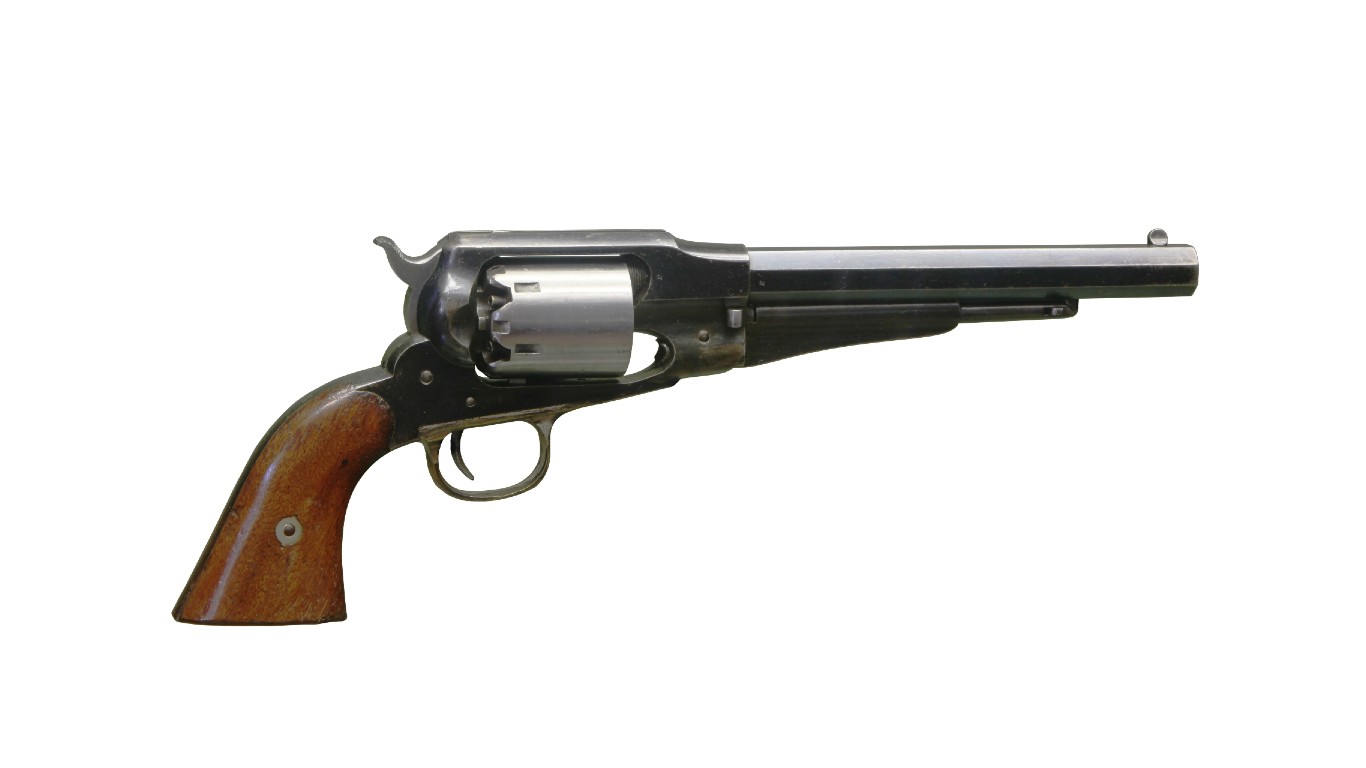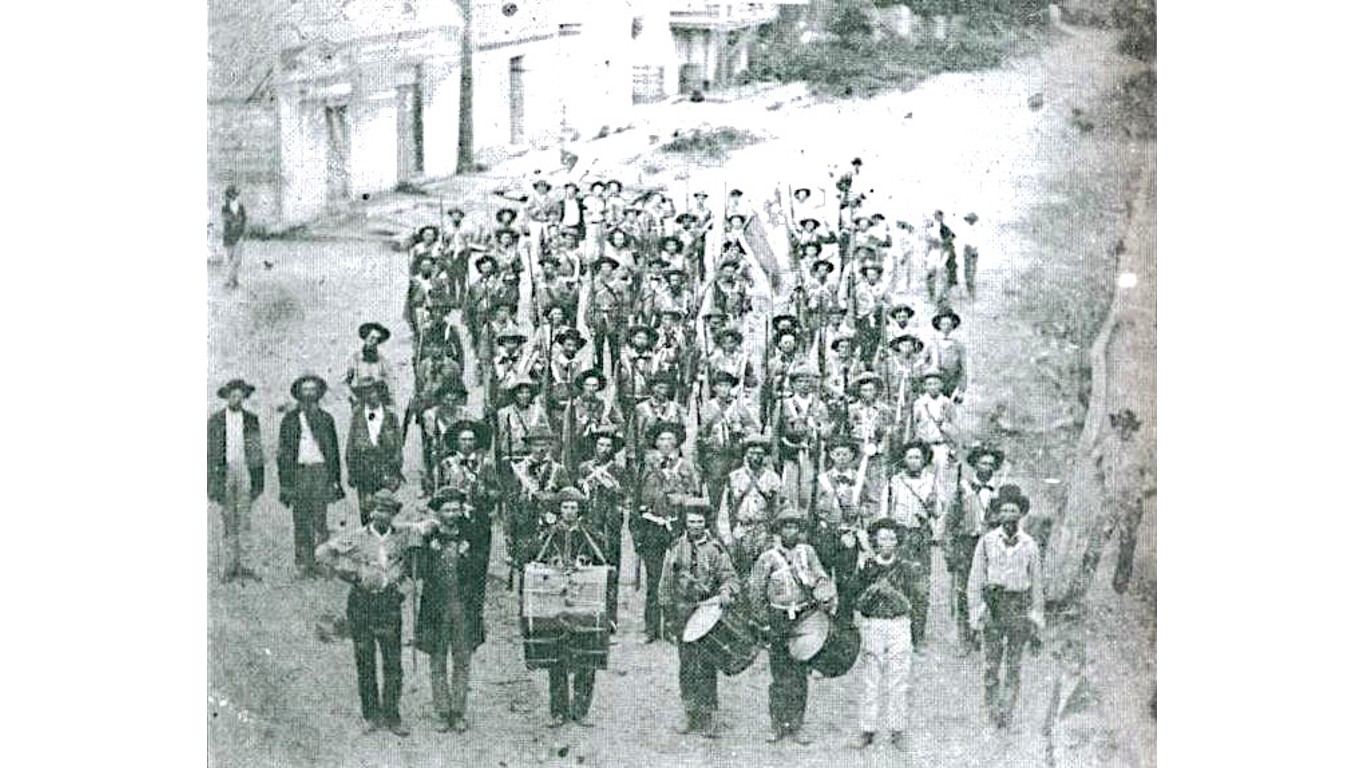
The Civil War is the bloodiest conflict in U.S. history. It’s estimated that roughly 620,000 soldiers lost their lives over the course of the conflict, and even though roughly half of those fatalities were due to disease, increasingly efficient firearms took a terrible toll. (Compare the war to the other wars in which the most Americans died.)
As technology evolves, strategies and tactics change. One of the most revolutionary changes that occurred during the Civil War was the movement away from flint-based triggers and towards percussion systems, which were much more reliable and would fire even in rainy weather, which their flint counterparts would not. Another was the introduction of breech-loading weapons, which could be reloaded faster than the old-style muzzle-loaders.
Accuracy improved among weapons used in the Civil War compared to previous conflicts, too. Revolutionary War muskets could be lethal up to 175 yards but were really only accurate at a range of about 100 yards. Civil War rifles were accurate for hundreds of yards, with some being deadly at up to 1,000 yards. (These are the 14 guns that helped fight the Revolutionary War.)
To compile a list of 22 guns used in the Civil War, 24/7 Tempo reviewed several sites about the history of the war and the small sidearms used by both sides to fight, including Military Factory and Smithsonian. We included guns widely used by either the Union or Confederate Army or both, as well as less common backup or personal pistols, which were less common. In order to avoid repetition, we selected one specific gun per type. For example, while more than 10 Colt revolvers and pistols were used in the war, we have listed only one here.
Click here to see 22 guns that helped fight the Civil War
The guns of the Civil War were a major part of the evolution in American warfare, they set the tone and technology for future generations of weapons systems, many of which we still use today.
Another interesting aspect about this list is that many of these guns are a collector’s dream. Weapons from the Civil War are highly sought after and incredibly rare, as this era was a stepping stone from black powder and muzzle-loading to repeating rifles with metal shell casings.

Adams M1851 revolver
The Adams M1851 revolver is a double-action revolver which made it ideal for close-quarters combat and self-defense. This pistol was the British answer to Colt’s revolvers and eventually found its way into the Civil War from across the pond.
[in-text-ad]
Allen & Wheelock M1861 revolver
The Allen & Wheelock M1861 is a single-action revolver that houses six shots in a cylinder like most other revolvers at the time. This was a direct competitor to Smith & Wesson’s revolvers, and the Allen & Wheelock firm was actually sued for patent infringement and had to shut down production by mid-1862.
Aston Model 1842
The Ashton Model 1842 was a single-shot percussion-based pistol. It was one of the older guns in use during the Civil War and not as effective as its counterparts like the revolver. However, this pistol did pave the way for the next evolution of pistol with its percussion system of operation which now allowed the gun to fire in rainy weather.
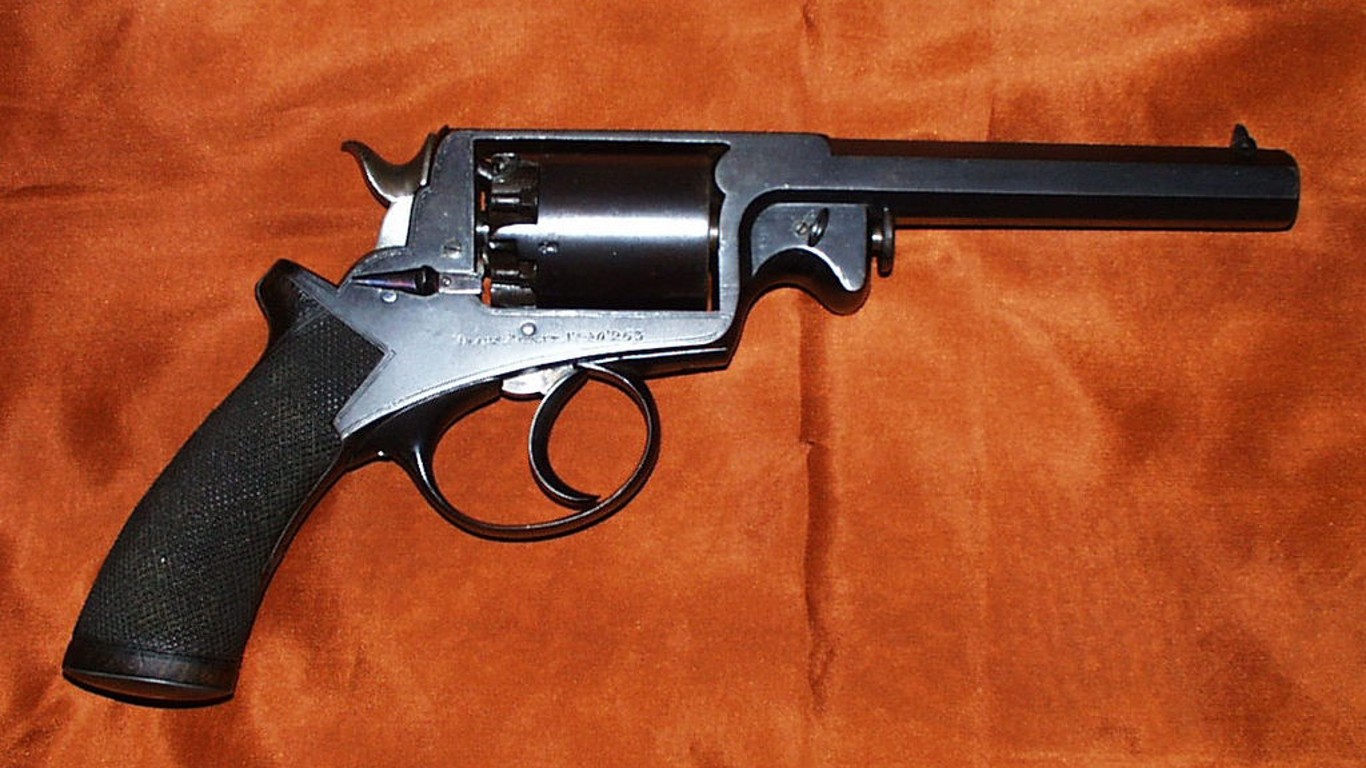
Beaumont–Adams M1862 revolver
Earlier iterations of the Beaumont-Adams M1862 revolver are known as the first true double-action revolvers to be produced in commercial quantities. The gun operates with a percussion based system and cylinder capable of housing six rounds.
[in-text-ad-2]
Belgian Pinfire
The Belgian Pinfire is a revolver that was originally manufactured in 1840 and found its way to the American battlefield only 20 years later. This was a standard single-action revolver with six shots in a rotating cylinder. This gun was best suited for close-quarters combat and self-defense.
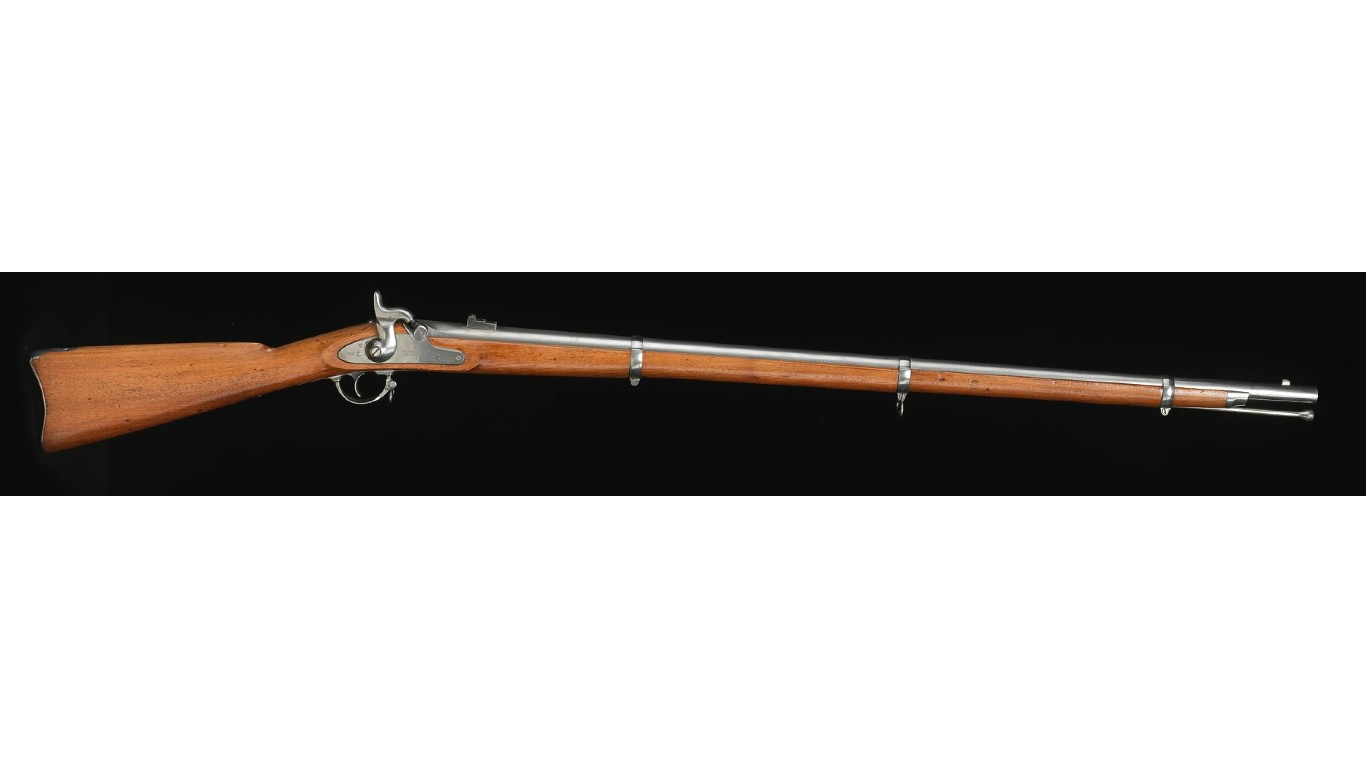
Colt Special Model 1861
The Colt Special Model 1861 was more or less a retooled Springfield Model 1861. The rifle was a standard percussion cap musket and saw extensive usage by both sides over the course of the conflict. By the end of the Civil War, over 130,000 Colt Special Model 1861 muskets were produced.
[in-text-ad]

Deringer M1825 Philadelphia caplock pistol
Deringer is a somewhat generic term for an iconic family of compact pistols normally used for self-defense. These pistols were generally large caliber weapons with very compact frames and often only single-shot or twin-shot. Considering the shorter barrel, these pistols were not accurate at range and were primarily used in close combat.

Fayetteville Model 1862
The Fayetteville Model 1862 was a percussion cap musket that saw broad usage by the Confederates. Nearly 32,000 were produced over the course of the Civil War. The Fayetteville was capable of reaching targets up to 800 yards with accuracy within 500 yards.

Frank Wesson rifle
Frank Wesson was brother to Daniel Wesson of Smith & Wesson and a fairly accomplished gunsmith himself. The Frank Wesson Rifle was revolutionary for a couple reasons: First, the gun utilized a breach-action system that gave quick access for reloading. It was also one of the first rifles to use metallic rimfire cartridges which were entirely self contained. These new cartridges could stand up to the elements, and the gun was easy to reload. It could also be used as an effective club in hand-to-hand combat.
[in-text-ad-2]
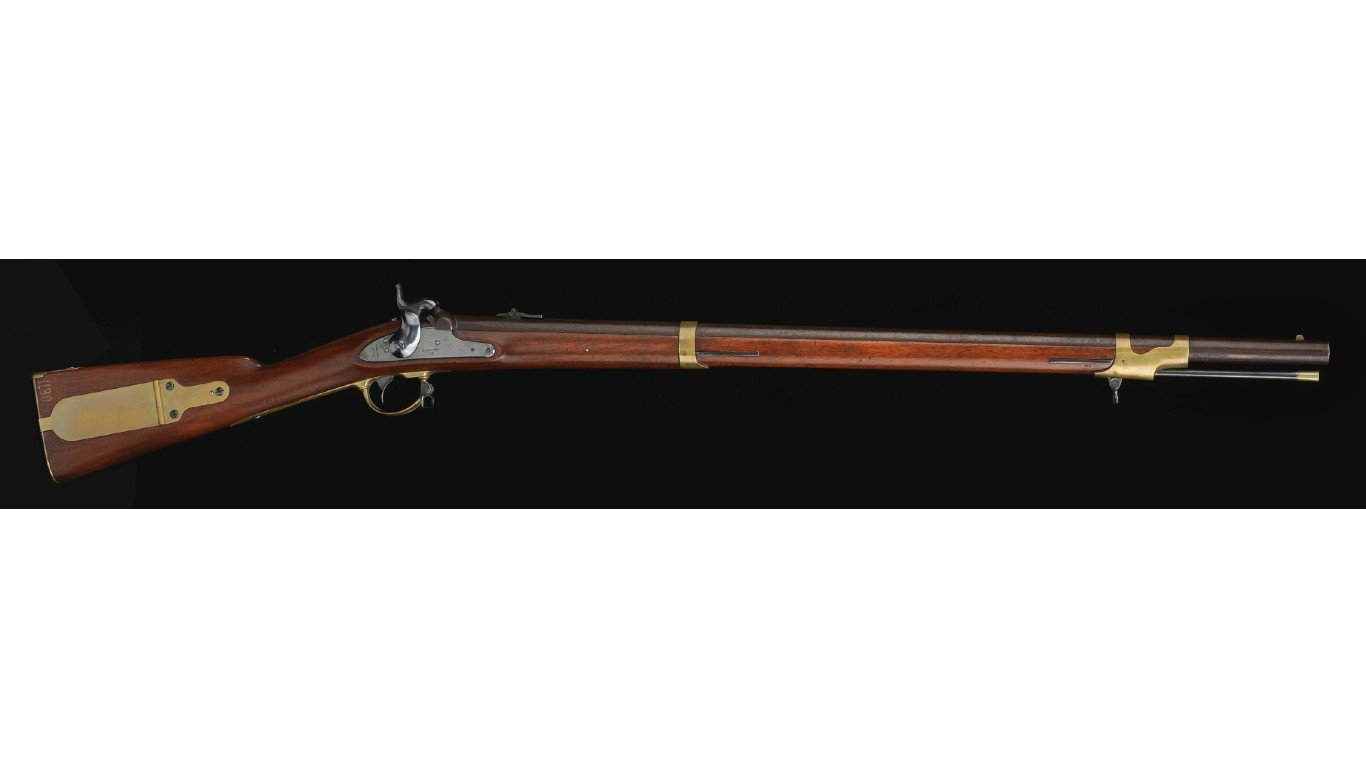
Harpers Ferry Model 1841 (Mississippi rifle)
The Harpers Ferry Model 1841 is commonly referred to as the Mississippi Rifle. The design of this rifle was that of a musket but with some upgraded features. The Mississippi was muzzle-loaded like its predecessors but it incorporated the percussion cap and percussion lock system allowing users to shoot up to three rounds a minute. This gun was quickly made obsolete by newer breech-loading guns and repeaters at the start of the Civil War but it was still used a fair amount because of its availability.
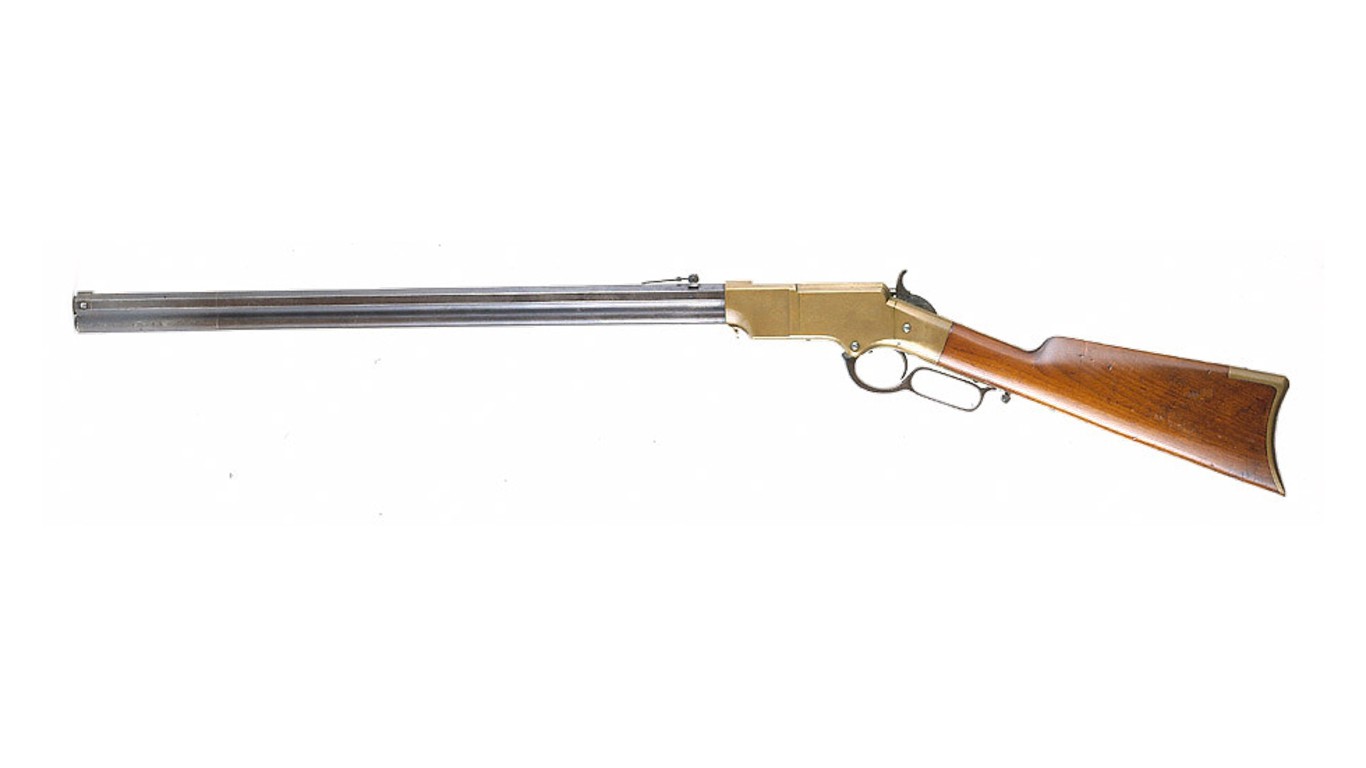
Henry repeating rifle
The Henry Repeating Rifle saw little action in the Civil War but it played an integral part in the evolution of lever-action firearms in the US. This repeater fired an all-new cartridge, made of aluminum, setting the stage for the development of the Winchester – which would play an effective role in taming the West.
[in-text-ad]
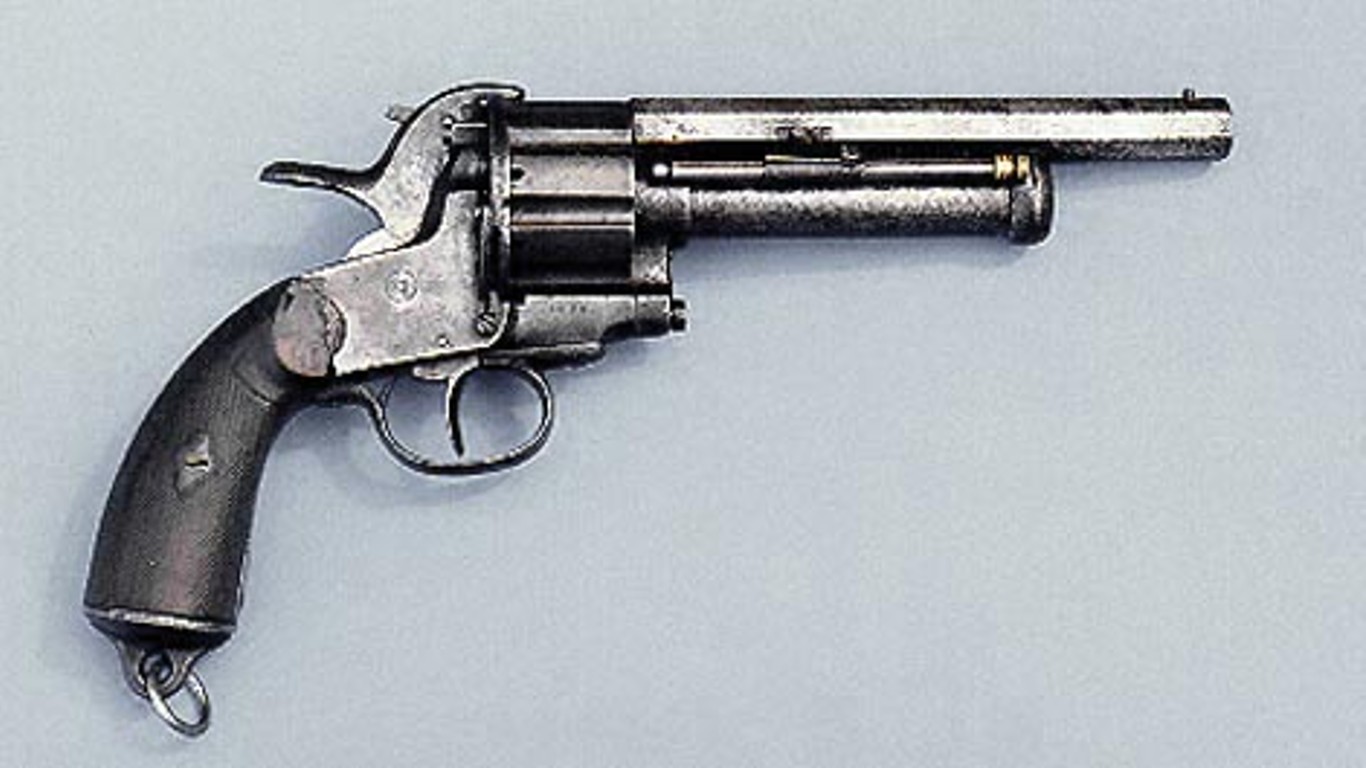
LeMat pistol
The LeMat Pistol is one of the more unusual guns on this list. Primarily in use by the Confederacy, the LeMat had a 9-shot revolving cylinder as well as a secondary barrel that was capable of firing 16-gauge buckshot. Essentially this gun was capable of open combat with the normal revolver and close combat with the buckshot handy.
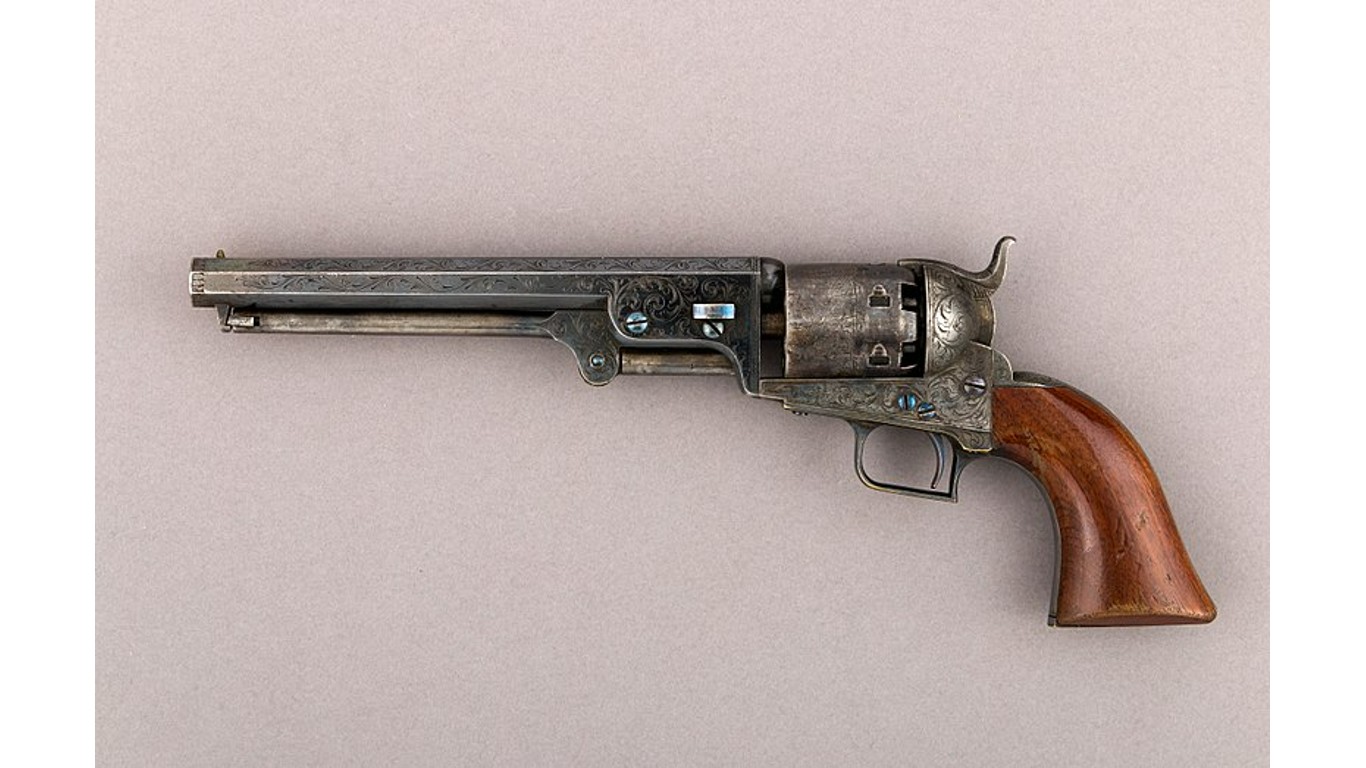
Manhattan Navy revolver
The Manhattan Navy was the answer to the Colt revolver. The Manhattan Firearms Company more or less copied designs from Colt after its patents expired. While Manhattan focused primarily on the consumer market, even producing some “Pepperboxes” and single-shot revolvers, some of the guns made their way to the battlefield.
Model 1861 Colt Navy revolver
The Model 1861 Colt Navy revolver was one of the more popular sidearms in the Civil War. The family of Colt Navy revolvers used a paper cartridge that consisted of black powder and a lead bullet. It chambered a total of six rounds of .36 ammunition.
[in-text-ad-2]
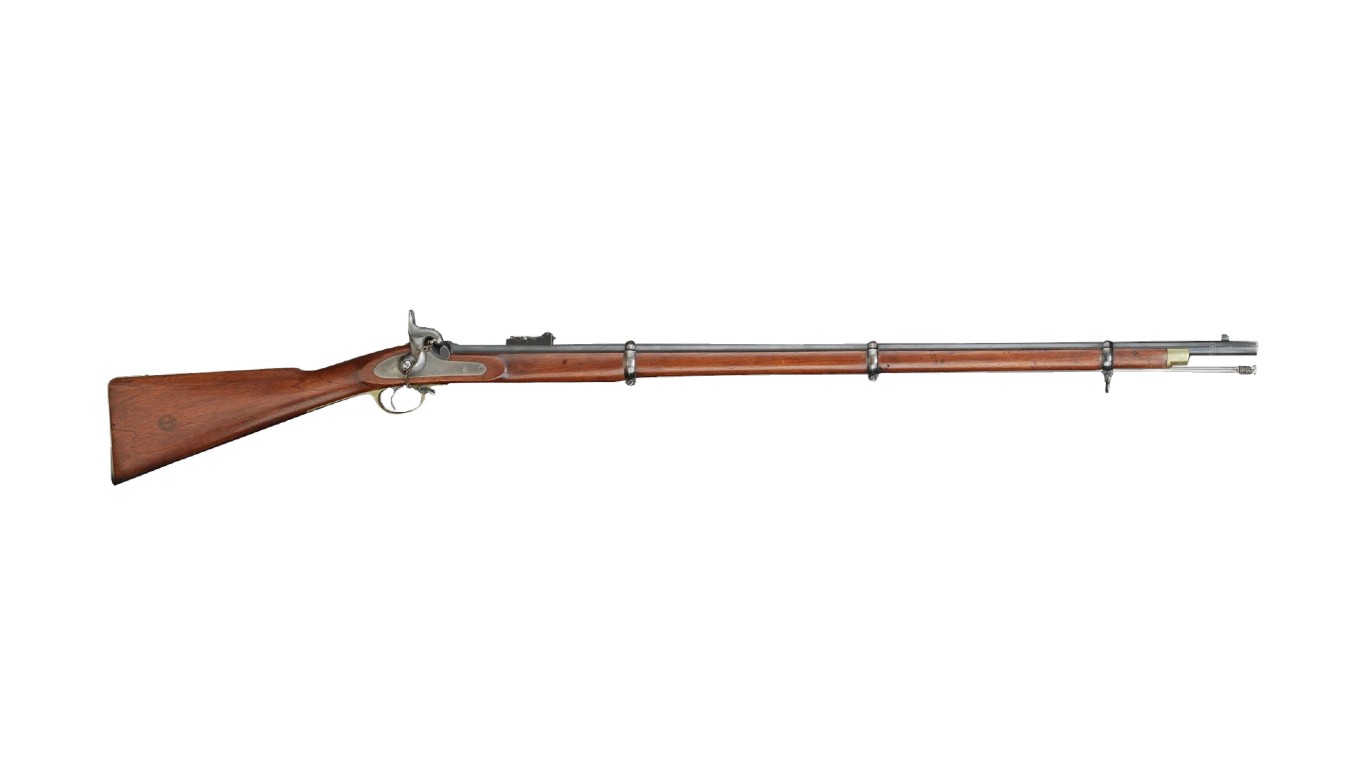
Pattern 1853 Enfield rifle
The Pattern 1853 Enfield Rifle was a staple of the British military in its conquests across the globe, and it quickly became popular among Confederate soldiers. For the arms race that was the Civil War, the Pattern 1853 was the Confederacy’s answer to the Union’s Springfield Model 1861 series. At the same time, the Pattern 1853 was capable of using Springfield rifle ammunition, allowing Confederate soldiers to use captured Union ammunition.
Pepperbox revolver
The Pepperbox revolver is basically an offshoot of the traditional revolver, but its ease of use and ability to manufacture led to widespread popularity. This gun provided the repeat-fire function in a more compact form than a rifle, although less accurate it was still effective in close-quarters combat and for self-defense.
[in-text-ad]
Remington-Rider Double-Action New Model
The Remington-Rider Double-Action from 1858, a product of Remington Arms and Joseph Rider, was one of the more iconic guns of the Civil War. It is claimed that this revolver is the first double-action cartridge-based revolver in the history of American firearm manufacturing. Double-action refers to the mechanism that allows the revolver to fire multiple shots while only having tocock the hammer once.
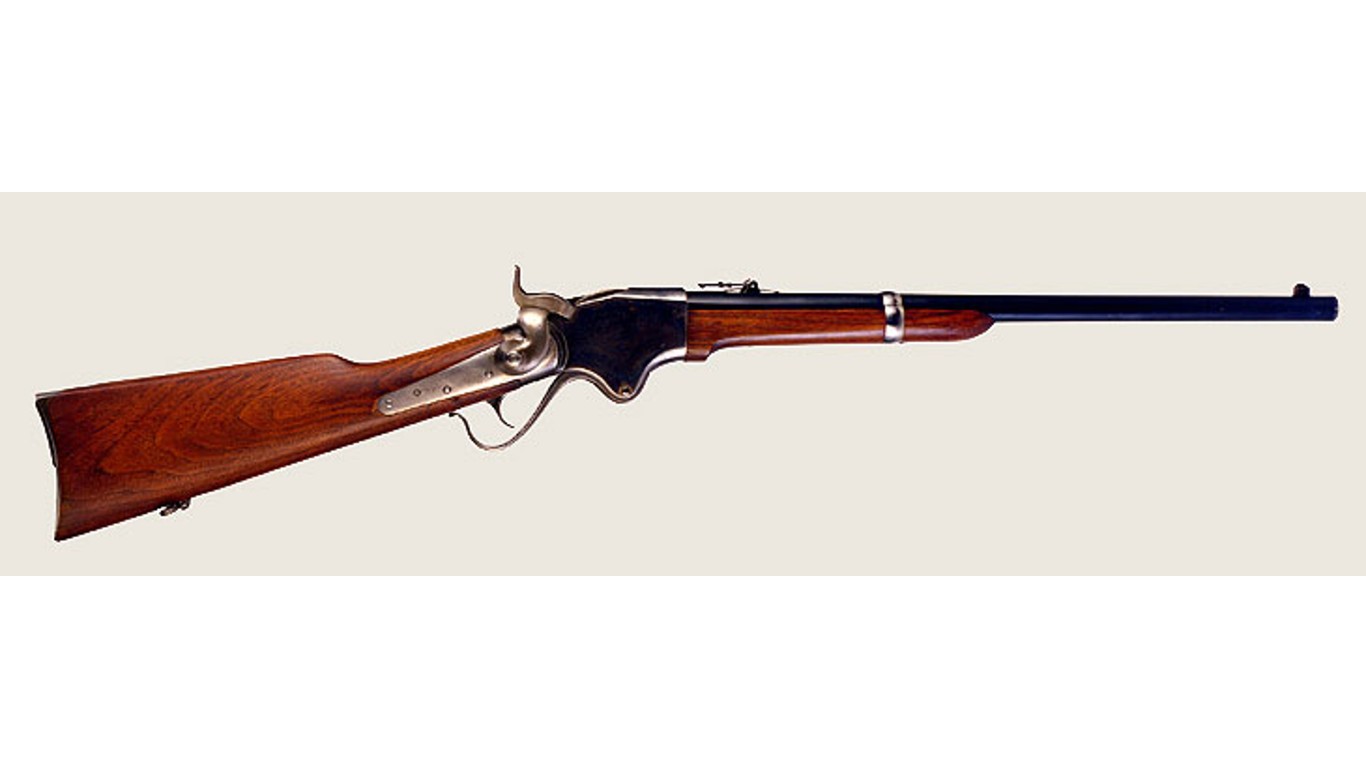
Spencer carbine
The Spencer rifle, or carbine as it’s sometimes called, is a lever-action repeating rifle. Mainly used by the Union side, it boasted a range of approximately 500 yards, which was significant in that era. The rifle’s muzzle velocity was roughly 1,000 feet per second, which gave it lethal power at range as well.

Springfield Model 1861 rifle
The Civil War was the last war in which the Springfield Model 1861 saw significant service. Muzzle-loading muskets like this one were soon made obsolete when the U.S. military adopted breech-loading weapons instead. Nevertheless, it did contribute to the evolution of American firearms as the first long-rifle with iron sights as a standard feature.
[in-text-ad-2]
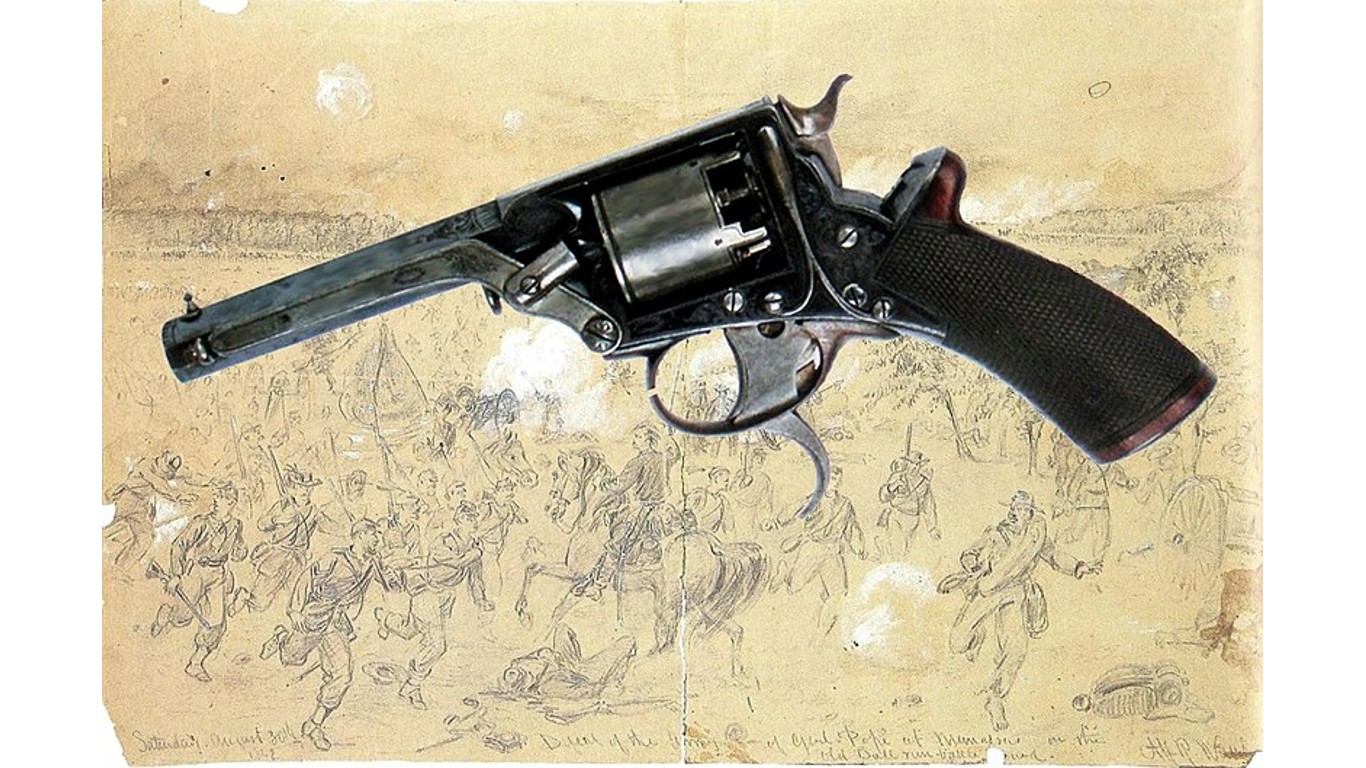
Tranter M1856 revolver
The Tranter revolver was a double-action cap-and-ball revolver that operated with a dual trigger mechanism with one rotating the cylinder and cocking the gun and the other firing it. British in origin, it quickly found popularity among Confederate soldiers when they had to turn to foreign powers to find weaponry.

Warner carbine
The Warner carbine was late to the party for the Civil War and only entered service in 1864, and only about 1,500 of these rifles were made. For its time, however, the gun proved effective for its stopping power and its breech-loading system.
[in-text-ad]

Whitworth rifle
The Whitworth Rifle was British in origin but found its way to the battlefield in the hands of Confederate soldiers. Although Britain was neutral during the Civil War, private British gun firms were allowed to conduct business with interested buyers. A muzzle-loader, the Whitworth had a range of up to 1,500 yards, with effective an ranges under 1,000 yards.
Travel Cards Are Getting Too Good To Ignore (sponsored)
Credit card companies are pulling out all the stops, with the issuers are offering insane travel rewards and perks.
We’re talking huge sign-up bonuses, points on every purchase, and benefits like lounge access, travel credits, and free hotel nights. For travelers, these rewards can add up to thousands of dollars in flights, upgrades, and luxury experiences every year.
It’s like getting paid to travel — and it’s available to qualified borrowers who know where to look.
We’ve rounded up some of the best travel credit cards on the market. Click here to see the list. Don’t miss these offers — they won’t be this good forever.
Thank you for reading! Have some feedback for us?
Contact the 24/7 Wall St. editorial team.
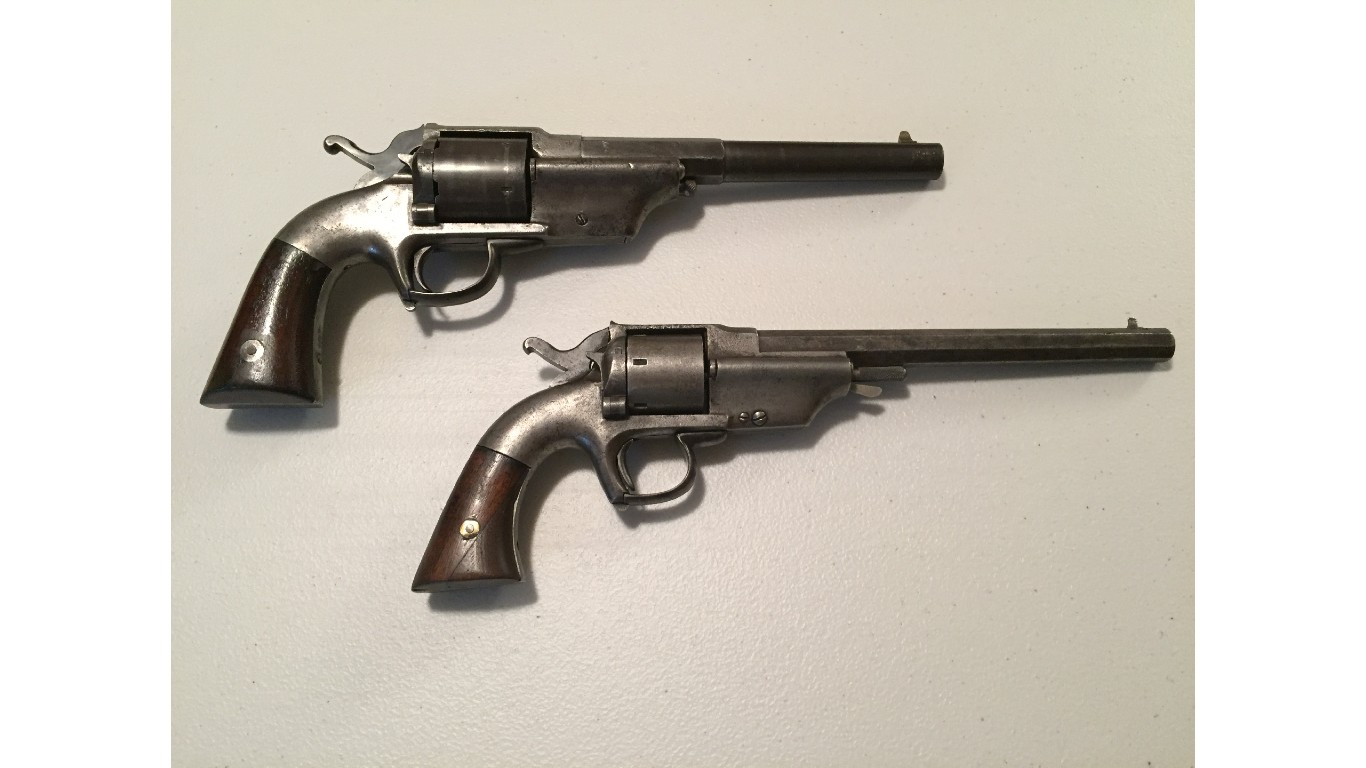
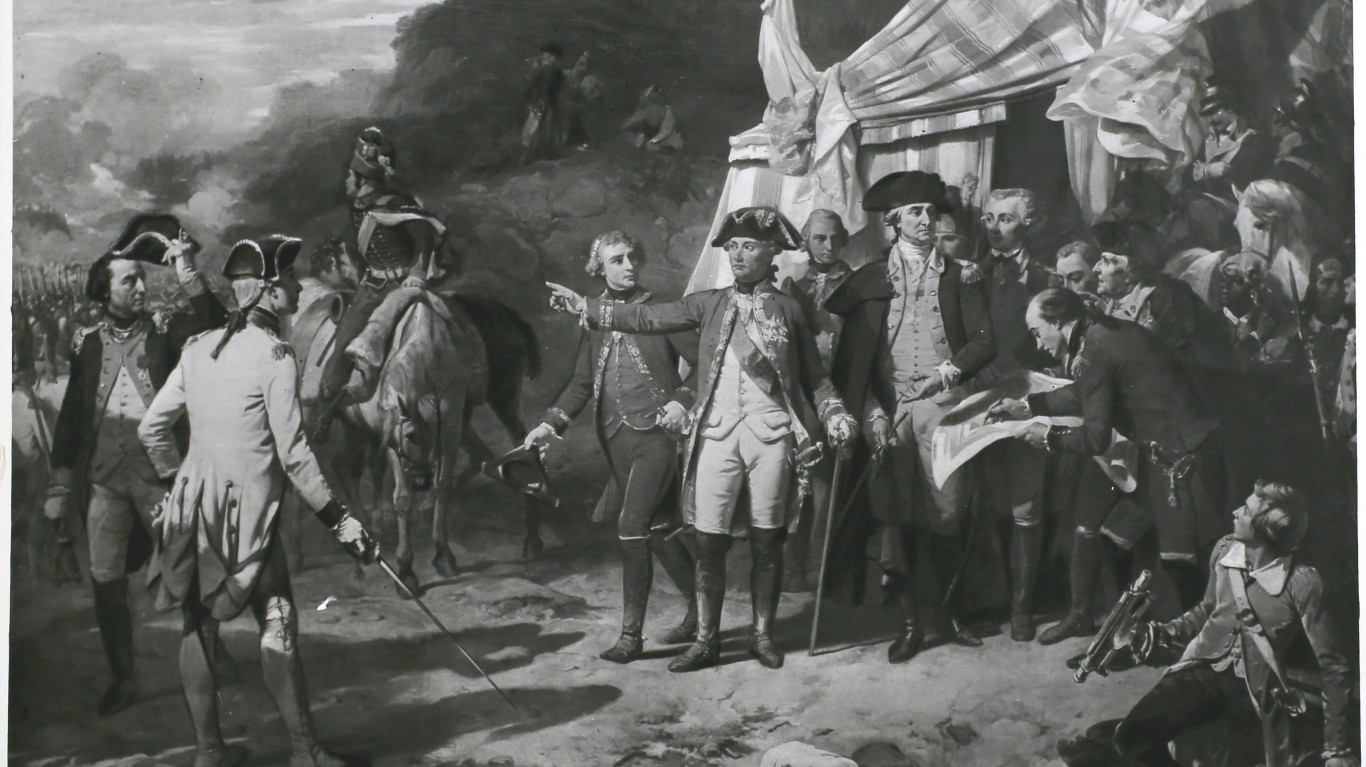 24/7 Wall St.
24/7 Wall St.